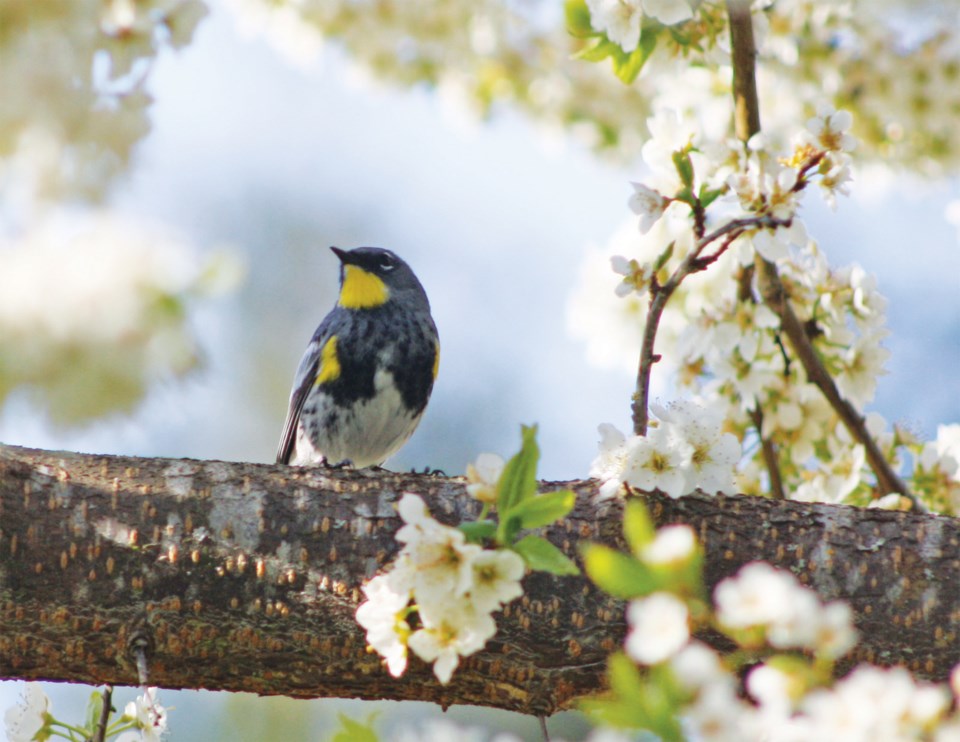Late April and early May are the zenith of the birding year with tens of thousands of migrants flooding into and through our area. In the first few days of May, the last of the flocks of snow geese flew overhead, gone to Wrangell Island, Siberia, to breed, and we will see them again flying south in October. However, it is the passerines, the perching birds and songbirds, that make the biggest difference to our local birdlife. A walk anywhere on the Sunshine Coast, along roads or trails, will yield a wide variety of birds, though seeing or identifying them will be a challenge unless you are familiar with their songs and call notes.
Vast numbers of the warbler family migrate through our area with many staying to breed. Seven of our regular eight species have now arrived, with only yellow warbler awaited. The trees and bushes have literally been alive with the frenetic action of yellow-rumped, orange-crowned, black-throated gray, Townsend’s, MacGillivray’s and Wilson’s warblers as they search for insects among the leaves and blossom. Yellow-rumped warblers are particularly abundant and large flocks of 80+ have been seen. In certain weather conditions with a low overcast, swallows congregate in large numbers and concentrate over our wooded lakes. Aldo Cogrossi reported a gathering of 150 individuals of six species over the Ruby Lake lagoon on April 29, and John Field recorded about 200 individuals, mainly violet-greens, over Garden Bay Lake on May 2.
Many of the other regularly-occurring summer species arrived in their allotted time spots, with Don Roberts recording the first black-headed grosbeak on May 1, and other common species reported such as western tanager, warbling vireo and western wood peewee. Uncommon migrants such as Townsend’s solitaire, western kingbird, Say’s phoebe and yellow-headed blackbird (thanks, Terry Knight for good photos) were all seen.
Two rare species were seen and photographed by keen birders. Eric Habisch’s feeder in the Bonniebrook area was visited by a calliope hummingbird for four days (with another report at a Mission Point feeder). Calliope, the smallest bird in North America, is common in the Okanagan but rarely reaches the coast. On April 29, Eric and John Hodges discovered a drab, obscure flycatcher at the Wilson Creek estuary. Photographs and a sound recording of its calls were obtained and further research revealed the bird was a dusky flycatcher, the first record of this interior species on the Sunshine Coast since three birds were mist-netted at a banding operation at the Sechelt airport in 2003-04.
To answer your questions or sightings, contact [email protected] or 604-885-5539.
Good birding.



